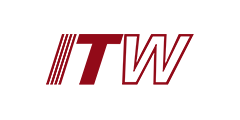Metal Repair with Epoxies


Metal Filled Epoxies for Metal Repair
Introduction to Metal Repair using Epoxies
Metal filled epoxy is a type of epoxy putty / repair material used to fix various metal parts, components, and surfaces, including aluminum, brass, and steel. This type of epoxy is made up of two components: The metal filled epoxy resin and a hardener. When combined, they form a hard and durable compound that can be used to repair a wide range of metal surfaces, holes, cracks, solid metal shafts, live leaks, and pipe repair (as metal repair epoxies are often used as a pipe leak sealer).
In this blog post, we will discuss the benefits and uses of metal filled epoxies and how they can be used to repair metal surfaces, as these systems are a little different from conventional metal adhesives.
Benefits of Metal Filled Epoxies Used in Metal Repair
Metal filled epoxies have several benefits that make them an ideal choice for repairing metal products. Whether working with a marine epoxy or a common industrial strength epoxy, advantages of metal filled epoxy systems (like steel epoxy or aluminum epoxy) for high performance results include:
1. Durability: Metal filled epoxies are known for durability and withstanding extreme temperatures, harsh weather conditions, and heavy loads.
2. Versatility: Metal filled epoxies can be used on various metal surfaces, including aluminum, brass, and steel. Some can repair and be machined back to OEM tolerances.
3. Easy to Use: Metal filled epoxies are easy to mix and apply, making them a convenient repair solution for metal surfaces and metal based components that need a strong metal bond.
4. Cost Effective: Metal filled epoxies are value-based solutions compared to replacing damaged metal components or surfaces entirely. For example, an epoxy metal putty can repair pitting and pitting corrosion quickly and conveniently.
Uses of Metal Filled Epoxies
Metal repair epoxies can be used to restore a wide range of metal made items and surfaces. The metal repairs with these type of epoxy systems include:
1. Cracks: Fill cracks and holes in metal surfaces, restoring them to their original shape or specified tolerance.
2. Corrosion: Repair and prevent corrosion in metal surfaces.
3. Wear and Tear: Repair metal surfaces that have been worn down due to constant use.
4. Broken Parts: Repair broken metal parts, such as machine parts, automotive parts, and other industrial mechanical components.
How to Use Metal Repair Epoxies
Using metal filled epoxy to repair metal surfaces is a straightforward process. Below are simplified steps to follow:
1. Clean the surface: Before applying the metal repair epoxy, ensure that the metal surface is clean and free of any dirt, oil, or rust.
2. Mix the epoxy: Mix the two components of the epoxy together according to the manufacturer’s instructions.
3. Apply the metal putty: When applying to the damaged area, use a spatula or putty knife. Ensure that the material is spread evenly across the surface.
4. Allow the epoxy to cure: The recommended time is usually 24 hours.
5. Sand and paint: Once the epoxy has cured, sand the surface down to a smooth finish and paint it to match the surrounding area.
6. Read the manufacturers Technical Data Sheets and Safety Data Sheets prior to use for all safety and specific instructions for use, as they can vary depending on the product.
Conclusion
Metal repair epoxies are a highly versatile, durable, and cost-effective solution for repairing metal components and surfaces. Whether you’re repairing cracks, wear from corrosion or erosion, regularly expected wear and tear, or broken parts, restoring metal surfaces to their original strength is possible with the right product. When using metal repair epoxies, always follow the manufacturer’s instructions to ensure the best results.
- +1 Like
- Add to Favorites
Recommend
This document is provided by Sekorm Platform for VIP exclusive service. The copyright is owned by Sekorm. Without authorization, any medias, websites or individual are not allowed to reprint. When authorizing the reprint, the link of www.sekorm.com must be indicated.

































































































































































































































































































































































































































































































































































































































































































































































































































































































































